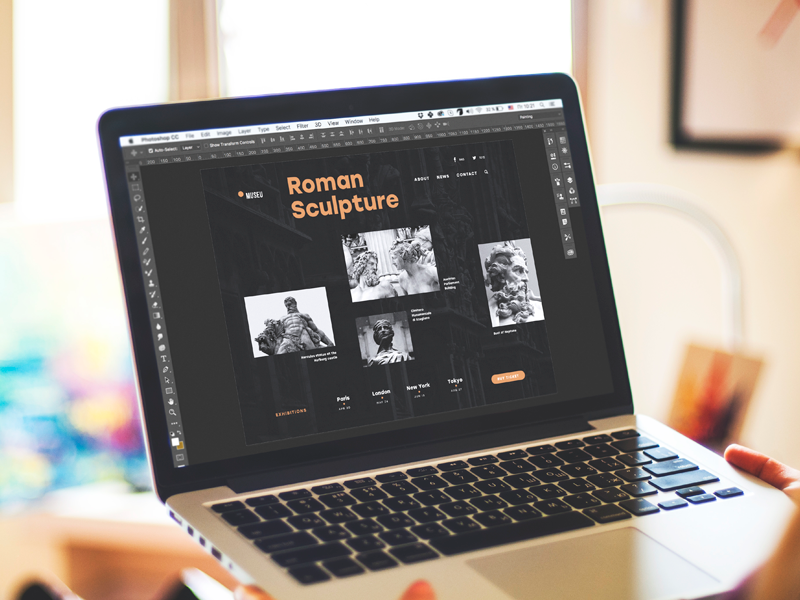How To Build A Design Portfolio With Zero Clients
- VKL

- Mar 14, 2023
- 3 min read

Building a design portfolio with zero clients may seem daunting, but it’s important to remember that it’s a process. By taking on design challenges, carrying out personal projects, getting inspiration from others, and following the tips outlined in this article, you can build a portfolio that showcases your skills and attracts potential clients.
Take On Design Challenges
Design challenges are a great way to improve your skills and build a portfolio, even without any clients. They are also a way to show potential clients that you have the ability to tackle real-world design problems. There are many design challenges available online, ranging from logo design to website design, and they can be completed in your own time.
To approach and complete design challenges effectively, start by understanding the brief or instructions provided. Research the client or brand and the industry they belong to, and consider their target audience. Brainstorm ideas and sketch out rough concepts before moving on to the digital design process. Be sure to pay attention to details, such as typography, color scheme, and layout.
When incorporating completed design challenges into a portfolio, be sure to showcase your process. Include sketches, mood boards, and any other relevant materials that show how you arrived at your final design. Explain your thought process and the reasoning behind your design decisions.
Carry Out Personal Projects
Personal projects are a great way to explore your creativity and develop your skills. They allow you to work on projects that you are passionate about and that showcase your unique style and perspective. Personal projects can also be used to fill gaps in your portfolio and demonstrate your versatility.
When planning and executing personal projects, start by identifying areas or topics that interest you. This could be anything from designing a poster for your favorite band to creating a branding package for a fictional company. Set clear goals and deadlines for your project, and be sure to approach it with the same level of professionalism as you would for a client project.
When incorporating completed personal projects into a portfolio, be sure to showcase the final product as well as the process. Explain why you chose the project, how you approached it, and any challenges you faced. Share any feedback or results you received, and explain how you would approach a similar project in the future.

Get Inspiration From Others
Inspiration can come from anywhere, and it’s important to stay up-to-date with the latest design trends and techniques. There are many websites and social media platforms dedicated to showcasing design work, including Dribbble, Behance, and Pinterest.
To effectively curate and organize design inspiration, start by creating a system for saving and organizing images and other content. This could be as simple as creating a folder on your computer or using a tool like Trello or Evernote. As you save images, be sure to take note of what you like about them and why they are inspiring to you.
When using inspiration to inform and enhance portfolio projects, be sure to give credit where credit is due. If you are directly inspired by a specific design or designer, be sure to mention them and link to their work. Use inspiration as a starting point, but be sure to put your own unique spin on the project.
Tips for Building an Effective Design Portfolio
In addition to taking on design challenges, carrying out personal projects, and getting inspiration from others, there are several other tips to keep in mind when building an effective design portfolio.
Keep it simple and organized:
Your portfolio should be easy to navigate and visually appealing. Use a simple layout and color scheme that doesn’t detract from your work.
Highlight your strengths:
If you excel in a particular area, such as typography or branding, be sure to showcase examples of your best work in that area.
Show a variety of work:
While it’s important to highlight your strengths, you should also show a variety of work to demonstrate your versatility as a designer.
Use real-world examples:
Whenever possible, include real-world examples of your work. This could be anything from a logo you designed for a friend’s business to a website you designed for a non-profit organization.
Get feedback:
Before finalizing your portfolio, get feedback from other designers, friends, or potential clients. This can help you identify areas for improvement and ensure that your portfolio is effective in showcasing your skills and experience.
Conclusion:
Building a design portfolio with zero clients may seem daunting, but it’s important to remember that it’s a process. By taking on design challenges, carrying out personal projects, getting inspiration from others, and following the tips outlined in this article, you can build a portfolio that showcases your skills and attracts potential clients. Remember to stay organized, highlight your strengths, show a variety of work, use real-world examples, and get feedback. With time and effort, your portfolio will become a powerful tool for showcasing your skills and landing new clients.




Comments